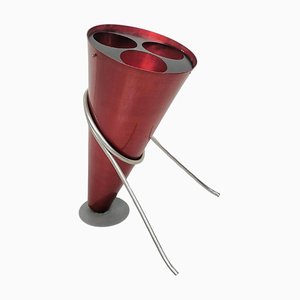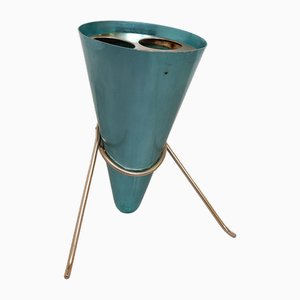
Born in Innsbruck, Austria in 1917, architect-designer Ettore Sottsass grew up in Milan. He studied architecture at the Polytechnic of Turin, graduating in 1939. As a member of the Italian army, Sottsass spent most of World War II in a Yugoslavian concentration camp. After the war, he returned to Milan and opened his first studio in 1947. Like most Italian designers in these years, he focused on activities to help the postwar reconstruction efforts, including exhibition design.
In 1958, he began working with Olivetti, for whom he designed multiple landmark objects—including Valentine, the brand’s iconic 1969 red plastic typewriter—and transformed the large, cold electronics and office machinery of the day into playful, accessible objects of desire.
During the 1960s, Sottsass spent time in both India, where he was deeply affected by the country’s vibrant colors and mythologies, and the U.S., where he embraced pop art culture. These influences can be seen in Sottsass's ceramic designs through the rest of his life.
In 1973, he cofounded Global Tools, an experimental design collective, alongside Gaetano Pesce, Alessandro Mendini, and others. During the ’70s, he collaborated with Alessi, Baccarat, and Knoll, designing everyday items like condiment sets and decanters. Other manufacturers that Sottsass designed for include Artemide, Bitossi, Oluce, Poltronova, Skipper, Stilnovo, and Zanotta.
In 1980, he formed the architecture/design firm Sottsass Associati. In 1981, he founded the Memphis Group, an influential, flamboyant design firm known for its brightly colored post-modern furniture, ceramics, and lighting. He remained with the Group until 1985, at which point he turned his attentions again to architecture. He died at the age of 90.



